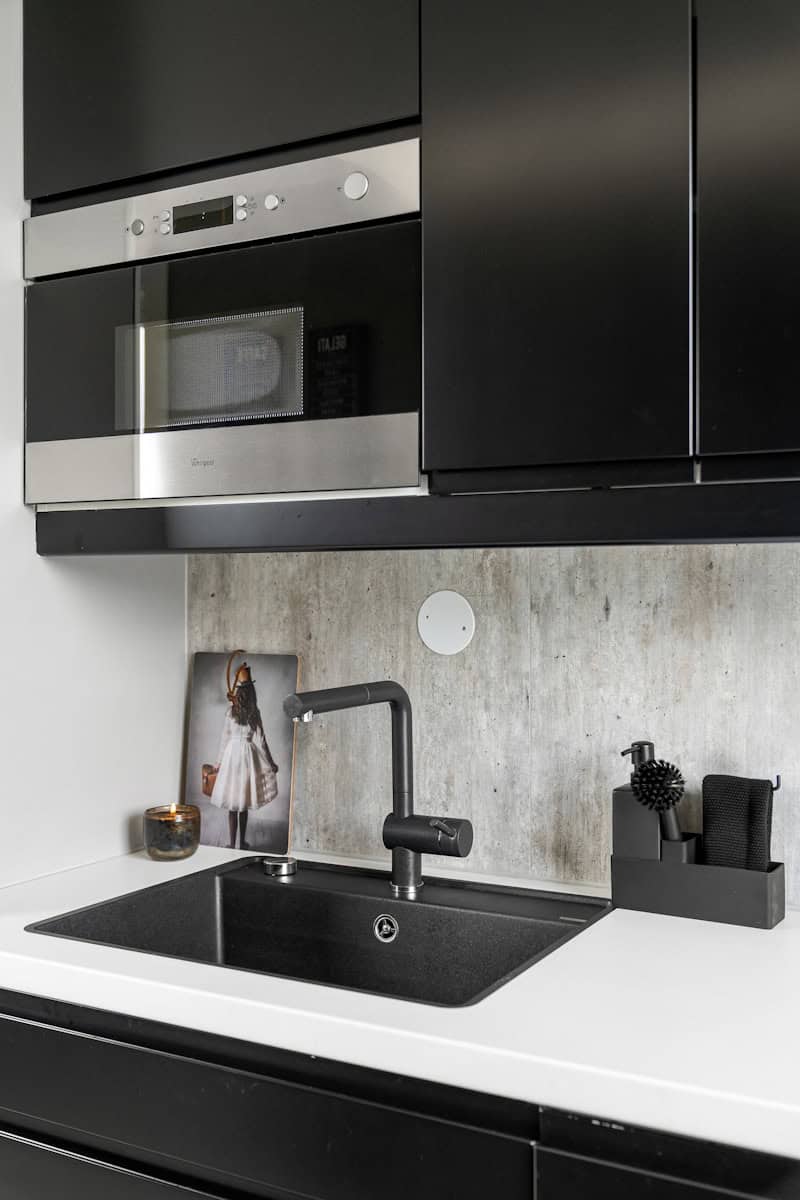Microwaves have become a staple appliance in kitchens worldwide. These devices offer quick and easy ways to heat meals, defrost frozen foods, and even cook certain dishes. Many people rely on their microwaves daily, making their longevity an important consideration.
Understanding the lifespan of a microwave can help users plan for replacements and maintain their appliances effectively. The average microwave lasts between 9 to 10 years, though high-quality models may function well for over a decade. Regular maintenance and proper usage can significantly extend a microwave’s useful life.
How Long Do Microwaves Last?
Microwaves have become a kitchen staple, but like any appliance, they don’t last forever. Here’s a look at the average lifespan of a microwave and factors that can affect its longevity:

Average Lifespan
The average microwave oven lasts about 9 years with normal use and 7 years with heavy use. However, this can vary depending on several factors, including usage intensity, maintenance, and even the brand.
Factors Affecting Lifespan
- Usage: A family that relies heavily on their microwave for daily cooking and reheating may find it needs replacing sooner, perhaps every 4 to 5 years. Less frequent use can extend the lifespan to 9 or 10 years.
- Maintenance: Proper care can significantly impact a microwave’s lifespan. Regularly cleaning the interior and exterior, avoiding overheating, and using microwave-safe containers can help prevent premature wear and tear.
- Brand: Some higher-end brands, like Wolf and Viking, are known for producing more durable microwaves that can last 10 to 15 years or even longer.
- Power: Commercial-grade microwaves, often found in restaurants or break rooms, tend to have a shorter lifespan (around 5 years) due to their heavy use.
Signs Your Microwave Might Be Dying
- Takes longer to heat food: This could indicate a decline in the magnetron’s efficiency.
- Loud noises: Unusual buzzing, grinding, or sparking sounds could signal a problem.
- Door doesn’t close properly: A faulty door latch can affect heating and safety.
- Control panel malfunctions: Unresponsive buttons or erratic displays can be problematic.
- Smoke or burning smell: This is a serious sign and warrants immediate discontinuation of use.
Extending the Life of Your Microwave
- Clean regularly: Wipe down the interior and exterior to prevent food buildup and grime.
- Use microwave-safe containers: Avoid using metal or plastic containers that aren’t microwave-safe.
- Don’t run it empty: Always have something in the microwave when it’s operating, even if it’s just a cup of water.
- Avoid overheating: Don’t run the microwave for excessively long periods, especially at high power.
- Consult the manual: Refer to your microwave’s user manual for specific care and maintenance instructions.
| Factor | Impact on Lifespan |
|---|---|
| Heavy usage | Reduces lifespan |
| Light usage | Extends lifespan |
| Regular cleaning | Extends lifespan |
| Using improper containers | Reduces lifespan |
| Overheating | Reduces lifespan |
| High-end brand | Extends lifespan |
Key Takeaways
- Microwaves typically last 9-10 years with proper care and maintenance
- Regular cleaning and careful use can extend a microwave’s lifespan
- Signs of wear or performance issues may indicate it’s time for a replacement
The Evolution of Microwave Ovens
While the average lifespan of a microwave is around 9 – 10 years, you can take steps to prolong its life and ensure it continues to serve you well for years to come. By using it properly, cleaning it regularly, and addressing any issues promptly, you can maximize the value of your microwave investment.
Microwave ovens have come a long way since their debut in 1947. The first models, called “Radaranges,” were massive appliances standing over 6 feet tall and weighing 750 pounds. These early microwaves cost around $5,000 – equivalent to $66,000 today.
Initially, microwaves were only found in restaurants and commercial kitchens due to their size and price. By 1964, smaller and more affordable models began entering American homes. This shift led to widespread adoption by the late 1970s.
- 1947: First “Radarange” microwave introduced
- 1964: Smaller, home-friendly models emerge
- Late 1970s: Microwaves become common in households
Today’s microwaves offer features like:
- Preprogrammed cooking times
- Over-the-range models with built-in exhaust fans
- Compact countertop designs
These advancements have made microwaves an essential kitchen appliance for quick and convenient cooking.
Microwave Durability and Longevity
Tips for Extending Microwave Life
Microwaves typically last between 9 to 12 years, depending on usage patterns and maintenance. The magnetron, which generates the microwaves, often wears out first. Improper use, such as running the appliance with metal objects, can shorten its lifespan.
To maximize a microwave’s durability:
- Clean regularly, especially door seals
- Ensure proper ventilation
- Use gentle cleaning methods for control panels
- Perform periodic power tests
A simple power test involves heating a glass of water on high. If it doesn’t boil within 2 minutes, the microwave may need professional inspection.
Brand quality affects longevity. Some brands are more reliable and less likely to develop problems. Consumers should research brand reliability before purchasing.
Factors influencing microwave lifespan:
- Frequency of use
- Maintenance habits
- Quality of manufacture
- Environmental conditions
Well-maintained microwaves can function for up to 10 years. Regular cleaning, proper ventilation, and using microwave-safe containers contribute to this extended lifespan.
Users should follow manufacturer guidelines for optimal performance and safety. Avoiding metal objects and keeping vents clear are simple yet effective practices for prolonging microwave life.
Time to Replace Your Microwave
Microwaves typically last around 10 years with proper care. Several signs indicate it’s time for a new appliance:
- Strange odors, especially burnt plastic smells
- Unusual sounds like excessive humming or buzzing
- Unresponsive or sticky control panels
- Turntable rotation issues
- Door closure problems
Smoke emissions are a serious concern and require immediate action. Lower-quality microwaves may use subpar materials, increasing the risk of malfunctions.
Usage frequency affects a microwave’s lifespan. Households using microwaves for 20% of main meals might need replacements sooner.
Consider microwave repairs for minor issues. However, if repair costs approach the price of a new unit, replacement is often more cost-effective.
Regular cleaning of grease filters extends the appliance’s life and maintains efficiency.
Microwave Safety Guidelines
To ensure safe microwave use:
- Maintain distance while operating
- Avoid metal containers and metallic decorations
- Keep ventilation clear
- Never run empty
| Do’s | Don’ts |
|---|---|
| Use microwave-safe containers | Cook eggs in shells |
| Clean regularly | Block air vents |
| Check door seals | Use damaged appliances |
A well-functioning microwave beyond its expected lifespan doesn’t necessarily require replacement. Monitor performance and safety features to determine when an upgrade is needed.
Common Questions About Microwave Ovens
How long do microwave ovens typically last?
Most microwave ovens have a lifespan of 5 to 10 years. Countertop models generally last 7-10 years, while over-the-range units tend to have a slightly shorter lifespan of 5-8 years. Built-in microwaves often last the longest, with an average of 9-10 years.
Is it safe to repair a microwave oven at home?
No, it is not safe to repair a microwave oven at home. Only certified technicians from the manufacturer’s official service center should perform repairs. Attempting DIY repairs can be dangerous due to the high voltage components inside.
How much does microwave repair usually cost?
Microwave repair costs typically range from $75 to $300. The price varies depending on the type of failure and whether parts need replacement. Simple fixes like replacing bulbs or fuses are less expensive, while replacing a control panel is usually the most costly repair.
When should a microwave be replaced instead of repaired?
Consider replacing a microwave if:
• It is over 3 years old
• Repair costs exceed $100
• There is rust inside the unit
• The door does not seal properly
A new microwave from a quality brand like LG, Amana, or Whirlpool can last up to 10 years with proper care.
What are signs that a microwave needs repair?
Common signs include:
• Not starting or heating food
• Making unusual noises
• Sparking inside the unit
• Door not closing fully
• Keypad not responding
If these issues occur, contact an authorized service center for inspection and repair.
Is it dangerous to run an empty microwave?
Yes, running an empty microwave can cause serious damage. With nothing to absorb the microwaves, they reflect repeatedly off the inner walls. This creates standing waves that can destroy the magnetron and other components.
How popular are microwave ovens globally?
Microwave ovens continue to grow in popularity worldwide. Over 13 million units are sold annually in the US alone. Globally, more than 30 million microwaves are purchased each year. The global microwave market was valued at $42.94 billion in 2022.







